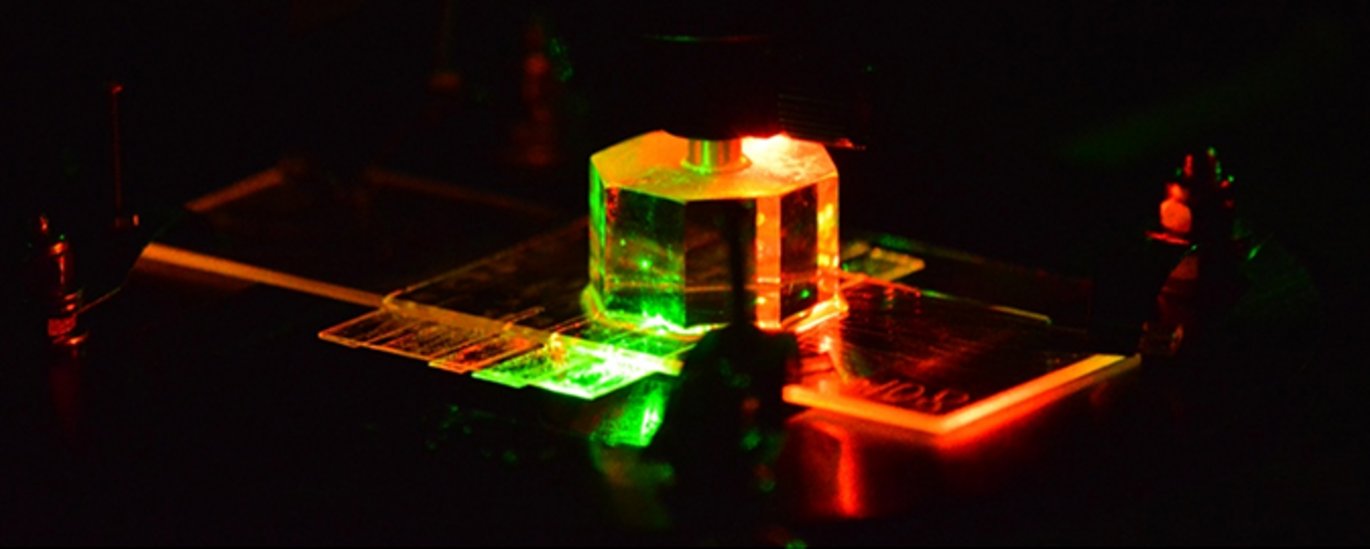Advanced fluorescence microscopy reveals new aspects of protein pathways on the ribosome
The protein called translation elongation factor EF-Tu is a well-known player in the protein synthesis process. A new scientific article describes novel aspects of this well-described protein, which appears to play an even more important role in securing the accuracy of translation than previously assumed. The results may have an influence on the medical and biotechnological utilisation of the bacterial protein synthesis apparatus.

Proteins are vital for the construction and maintenance of tissue and cells. Proteins consist of amino acids that are linked in the order prescribed by the genetic protein recipe. Generally speaking, the translation of the protein recipe (called translation) occurs similarly in all types of cells – whether it is bacterial cells or cells in a human body.
All cells contain protein synthesis factories, called ribosomes, which can be programmed with the genetic recipe (called messenger RNA or mRNA) for the protein to be produced. The ribosomes also receive help from tRNA molecules and protein factors when new proteins are to be made for the cell. The tRNA molecules are attached to an amino acid at one end (called aminoacyl tRNA or simply aa-tRNA), and at the other end there is an anticodon that can decode the amino acid code in mRNA, where one codon codes for one amino acid.
The well-known protein synthesis process
In bacteria, we find elongation factor EF-Tu, which is a protein that helps the ribosome make new proteins. EF-Tu is a GTPase, i.e. the protein can bind to guanosine triphosphate, GTP, and cleave it to guanosine diphosphate, GDP. In eukaryotic cells, there is a corresponding protein called eEF1A. EF-Tu's function is described as follows in most basic textbooks in molecular biology (see figure 2):
When EF-Tu is bound to GTP, the factor can transport aa-tRNA molecules to the mRNA-programmed ribosome (Step I). Here, the aa-tRNA is delivered close to the so-called A-site where the decoding of the genetic code takes place. In the A-site, it is checked whether the codon on the mRNA and anticodon of the newly arrived tRNA match (Step II). If this is the case, the ribosome sends a message to EF-Tu to split the bound GTP, resulting in a major structural change in EF-Tu (Step III). This causes EF-Tu to release the bound aa-tRNA and leave the ribosome (Step IV). Aa-tRNA "falls into place" in the A-site of the ribosome, where the amino acid of the tRNA is coupled to the growing protein chain (Step III).
Should the textbook be rewritten?
A Danish-American research collaboration has now shown that the above description of EF-Tu's function during the decoding of the genetic code is too simple. Advanced fluorescence microscopy (total internal reflection fluorescence microscopy; Figure 1) has shown that EF-Tu's structural change on the ribosome is far smaller than previously assumed (Step III). The speed of change also depends on whether codons and anticodons in the A-site match. The new study thus indicates that EF-Tu is checking twice whether codons and anticodons match each other in the ribosomal A site –
both before and after the hydrolysis of GTP (i.e. in both stages II and III). EF-Tu with a correct aa-tRNA stays longer on the ribosome, and probably helps "pushing" the a-tRNA into place in the A-site (step III). The study also indicates that EF-Tu completes its structural change only after leaving the ribosome (step IV).
New knowledge about EF-Tu's function has both medical and biotechnological applications. EF-Tu's function can be inhibited by four classes of antibiotics - none of these, however, are used in medical treatment today. New knowledge about EF-Tu's role as proofreader during the translation of the genetic code pave new ways for treating bacterial infections. Furthermore, the bacterial protein synthesis apparatus is used for the production of proteins on both laboratory and industrial scale. New knowledge of the protein synthesis apparatus of the bacteria can help improve both the quality and quantity of this production. Among other things, EF-Tu is important for the production of modified proteins containing unnatural amino acids.
The scientific article has just been published in the international journal Nucleic Acids Research:
“Structural dynamics of translation elongation factor Tu during aa-tRNA delivery to the ribosome”
Darius Kavaliauskas, Chunlai Chen, Wei Liu, Barry S. Cooperman, Yale E. Goldman and Charlotte R. Knudsen
https://doi.org/10.1093/nar/gky651
For further information, please contact
Associate Professor Charlotte Rohde Knudsen – 2057 2372 - crk@mbg.au.dk
Department of Molecular Biology and Genetics, Aarhus University, Denmark
